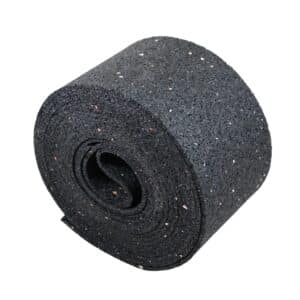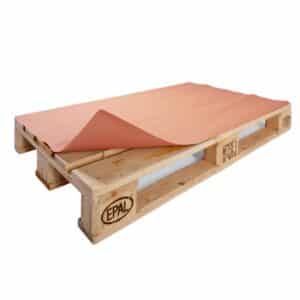Now 10% off all Ergolash lashing straps save now! Voucher code: ergo10 | Valid until 31.05.2025
| Bulk prices per piece | Single | Package: 11 pcs. | Pallet: 400 pcs. |
|---|---|---|---|
| Price incl. VAT | 7,90 € | 7,12 € | 6,16 € |
| Price plus VAT | 6,64 € | 5,98 € | 5,18 € |
From: 5,18 €
Anti-slip rubber is recommended as a cost-effective and comparatively very efficient aid for securing loads in containers and truck shipping.
The friction between two materials – e.g. between a Euro pallet and the truck bed (rough/smooth) – is defined as the coefficient of friction. The use of anti-slip mats increases the coefficient of friction, so that the goods do not slip so quickly. The forces to be secured in accordance with the CTU Code are therefore significantly lower and the shipper can use less expensive load securing equipment (e.g. lashing straps, dunnage bags, etc.). Particularly in the freight sector, this can contribute to higher loading weights being possible.
The PU-bonded rubber offers a sliding friction coefficient of 0.6 µ to 0.9 µ (depending on the respective material pairing), is temperature-resistant from -30 to 100 °C and is also suitable for unprotected weathering. The format is ideal for applications with Euro pallets.
For more info on anti-slip mats, visit our blog section.
According to VDI Guideline 2700ff, Sheet 3.2, Sheets 9 and 15, the maximum load of anti-slip mats should be selected so that 30% deformation of the material thickness is not exceeded.

74,44 € Original price was: 74,44 €.66,68 €Current price is: 66,68 €.

From: 16,49 €

From: 11,95 €

From: 3,38 €
You are currently viewing a placeholder content from Google Maps. To access the actual content, click the button below. Please note that doing so will share data with third-party providers.
More Information
Leave a Reply